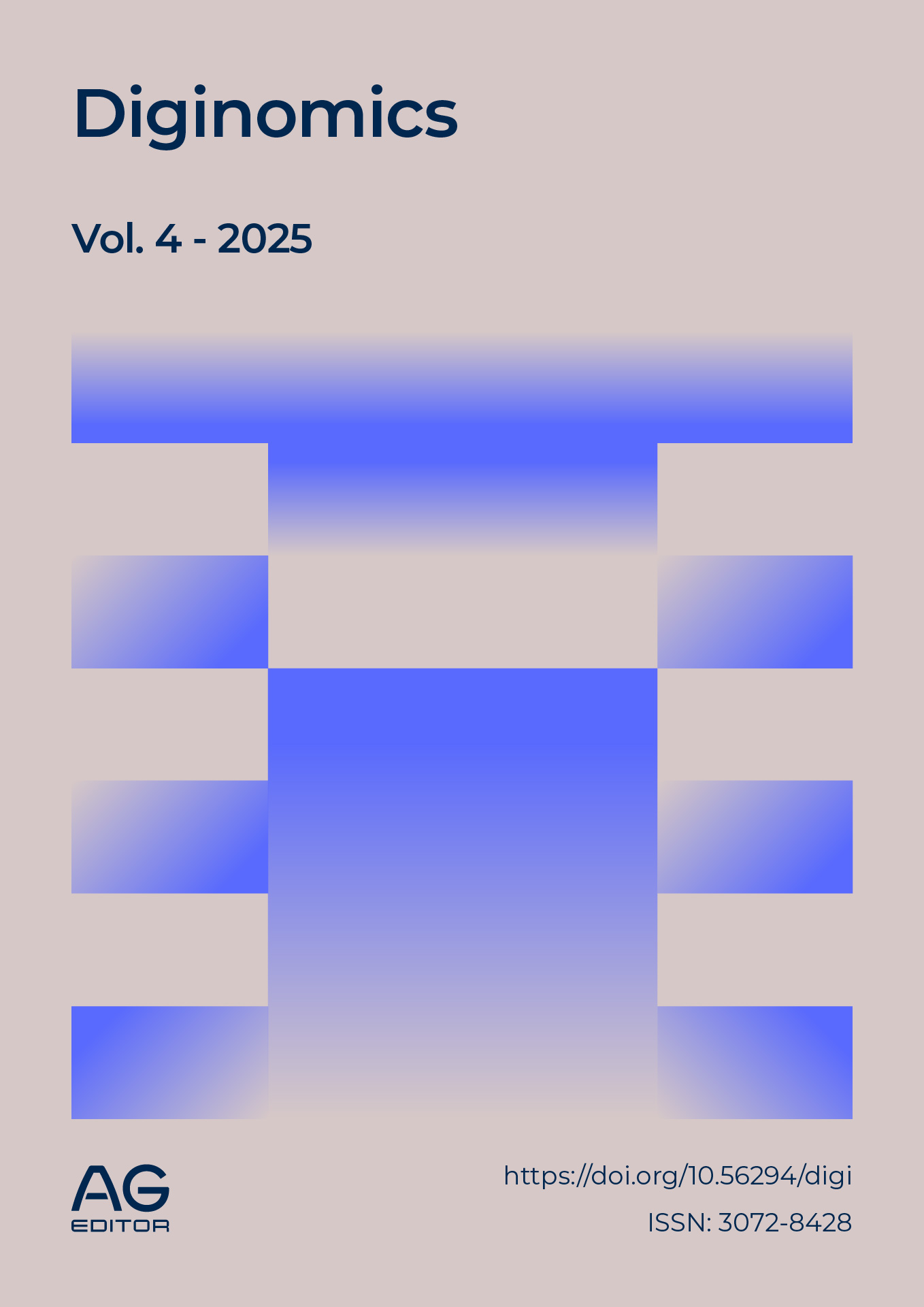The influence of CEO psychological traits on CSR disclosure patterns: a metadata perspective
DOI:
https://doi.org/10.56294/digi2025210Keywords:
CEO Psychological Traits, CSR Disclosure, Metadata, Narcissist, CEO OpennessAbstract
The study investigated the influence of CEO psychological traits on CSR disclosure patterns: a metadata perspective. The study acknowledged that CSR reports are far more heterogeneous in tone, structure, and credibility despite attempts to add standardisation by such frameworks as the Global Reporting Initiative, the Sustainability Accounting Standards Board and the Integrated Reporting. The study also acknowledged that the nexus between executive psychology and CSR reporting is under-researched. While studies on narcissist CEOs have revealed the leaders to be prone to self-promotional behaviour, empathetic leaders may focus on inclusivity and orientation to stakeholders. The study utilised a panel of 85 non-financial listed firms on the Nigerian Exchange Group (NGX) that was unbalanced between 2011-2023. The data are collected based on notices on firm websites, the GRI database, and the Bloomberg ESG repository. Biographical information on the CEO and compensation data are captured in BoardEx, local filings/proxy statements, and annual reports of the firms. Following the elimination of the firm-years with either missing outcome or key predictors, the working panel includes 3,500 observations outcome of the firms. The finding revealed that CEO openness greatly predetermined future-focused CSR articulations and embracement of new models, in line with open-minded leadership tendencies of adopting innovative strategies and thinking into the future. The study concluded that openness of the CEOs is the most significant determining factor in the change towards adoption of novel CSR frameworks, although the other attributes have an intermediate or indirect effect. It was recommended that Firms must use empathetic CEOs to improve the prosocial tone of the disclosure without compromising technical accuracy and simplicity of the report.
References
1. Kargbo, U., Terrence, B., & Palmer, T.B. Redefining Corporate Social Responsibility:
The Role of Strategic Communication Practices. Sustainability, 2025, 17(9), 4226.
https://doi.org/10.3390/su17094226 DOI: https://doi.org/10.3390/su17094226
2. De Villiers, C., La Torre, M. & Molinari, M. The Global Reporting Initiative’s (GRI) Past, Present and Future: Critical reflections and a research agenda on sustainability reporting (standard-setting), Pacific Accounting Review, forthcoming, 2022. DOI: 10.1108/PAR-02-2022-0034 DOI: https://doi.org/10.1108/PAR-02-2022-0034
3. Hambrick, Donald C., and Phyllis A. Mason. Upper Echelons: The organization as a reflection of its top managers. The Academy of Management Review, 1984, 9, 2, 193-206. JSTOR, https://doi.org/10.2307/258434. Accessed 26 Aug. 2025. DOI: https://doi.org/10.2307/258434
4. Wang, L, Li H., & Mu, Y. Study of CEO Narcissism and Corporate R&D Investment. Front. Psychol. 2022, 13:888618. doi: 10.3389/fpsyg.2022.888618 DOI: https://doi.org/10.3389/fpsyg.2022.888618
5. Zivkovic, S. Empathy in leadership: How it enhances effectiveness. 80th International Scientific Conference on Economic and Social Development and 10th International OFEL Conference "Diversity, Equity and Inclusion: The essence of organisational well-being" Dubrovnik, 01-02 April 2022.
6. Barrick, M. R., & Mount, M. K. The big five personality dimension and job performance: A meta-analysis. Personnel Psychology, 1991, 44, 1-26. DOI: https://doi.org/10.1111/j.1744-6570.1991.tb00688.x
7. Suchman, Mark C. Managing Legitimacy: Strategic and Institutional Approaches. The Academy of Management Review, 1995, 20, 3, 571–610. JSTOR, https://doi.org/10.2307/258788. Accessed 26 Aug. 2025. DOI: https://doi.org/10.2307/258788
8. Dhaliwal D, Li OZ, Tsang AH, Yang YG. Voluntary non-financial disclosure and the cost of equity capital: the case of corporate social responsibility reporting. Accounting Review, 2011, 86(1): 59-100. DOI: https://doi.org/10.2308/accr.00000005
9. Melloni, G., Caglio, A., Perego, P. Saying More with Less? Disclosure conciseness, completeness and balance in integrated reports (January 15, 2017). Forthcoming, Journal of Accounting and Public Policy, Available at SSRN: https://ssrn.com/abstract=2861056 or http://dx.doi.org/10.2139/ssrn.2861056 DOI: https://doi.org/10.2139/ssrn.2861056
10. Li, F. Textual analysis of corporate disclosures: A survey of the literature. J. Account. Literature, 2010, 29, 143-165
11. Loughran, T., & Mcdonald, B. Barron’s red flags: Do they actually work? J. Behavioral Finance, 2011, 12, 90-97 DOI: https://doi.org/10.1080/15427560.2011.575971
12. Lassoued, N., & Khanchel, I. Voluntary CSR disclosure and CEO narcissism: The moderating role of CEO duality and board gender diversity. Review of Managerial Science, 2023, 17, 3, 1075–1123. DOI: https://doi.org/10.1007/s11846-022-00555-3
13. Campbell, W.K., Hoffman, B.J., Campbell, S.M., and Marchisio, G. Narcissism in organizational contexts. Hum. Resour. Manage. Rev., 2011, 21, 268-284. doi: 10.1016/j.hrmr.2010.10.007 DOI: https://doi.org/10.1016/j.hrmr.2010.10.007
14. Petrenko, O.V., Aime, F., Ridge, J. and Hill, A. Corporate social responsibility or CEO narcissism? CSR motivations and organizational performance. Strategic Management Journal, 2016, 37(2), 262-279. DOI: https://doi.org/10.1002/smj.2348
15. Hunjra, A. I., Boubaker, S., Arunachalam, M., & Mehmood, A. How does CSR mediate the relationship between culture, religiosity and firm performance?. Finance Research Letters, 2021, 39, DOI : https://doi.org/10.1016/j.frl.2020.101587. DOI: https://doi.org/10.1016/j.frl.2020.101587
16. Decety, J., & Cowell, J. M. The complex relation between morality and empathy. Trends in Cognitive Sciences, 2014, 18, 7, 337–339. DOI: https://doi.org/10.1016/j.tics.2014.04.008
17. Saleh, T.A., Sarwar, A., Islam, A., Mohiuddin, M., Su, Z. Effects of Leader Conscientiousness and Ethical Leadership on Employee Turnover Intention: The Mediating Role of Individual Ethical Climate and Emotional Exhaustion. Int. J. Environ. Res. Public Health 2022, 19, 8959. https://doi.org/10.3390/ ijerph19158959 DOI: https://doi.org/10.3390/ijerph19158959
18. Theil, K., Hovy, D., and Stuckenschmidt, H. Top-down influence? Predicting CEO personality and risk impact from speech transcripts. Proc. Int. AAAI Conf. Web Soc. Media, 2023, 17, 832–841. doi: 10.1609/icwsm.v17i1.22192 DOI: https://doi.org/10.1609/icwsm.v17i1.22192
Downloads
Published
Issue
Section
License
Copyright (c) 2025 Samuel Ejiro Uwhejevwe-Togbolo, Augustine Akpojevwa Okwoma, Annmarie Nkemejina Okoli, Victoria Omenebele Kaizar, Ajueyitse Martins Otuedon, Festus Elugom Ubogu (Author)

This work is licensed under a Creative Commons Attribution 4.0 International License.
The article is distributed under the Creative Commons Attribution 4.0 License. Unless otherwise stated, associated published material is distributed under the same licence.





